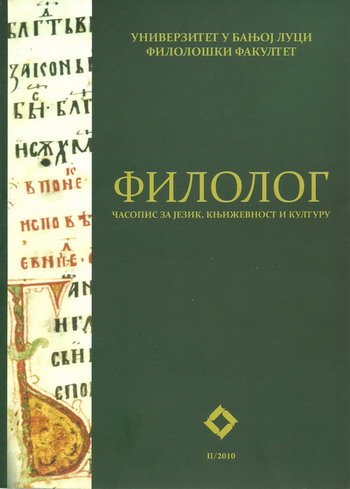Qui est donc l’eunuque? Ruse d’amour et art parasitique dans "L’Eunuque" de Terence.
Who Is, Then, a Eunuch? Love Ploy and the Art of Parasitism in Terence’s “The Eunuch”
Author(s): Élisabeth GavoilleSubject(s): Comparative Study of Literature, Philology, Theory of Literature, Drama
Published by: Филолошки факултет Универзитета у Бањој Луци
Keywords: Terence; “Eunuch”; sex; weasel; parasite; flatterer; Gnatho; boastful soldier; Ovid; “The Art of Love”;
Summary/Abstract: The title of Terence’s most successful work is ambiguous. The flamboyant costume characterizing an oriental eunuch will be worn by a young man striving to indulge the calls of the flesh, while the genuine eunuch in the play is but a ruined old man with the face of a weasel (an animal symbolizing female aspects and parasitism), that is to say without a truly sexual or human identity. Taking as a starting point that basic indeterminacy, the character of eunuch obsesses all the adult male characters in the play: Chaerea, who degrades himself by taking the role of a eunuch, but also wistful Phaedria, a ‘pre-elegiac’ lover of Thais, a prostitute, weakling Chremes and, especially, Thraso, a soldier, who is characterized by cowardice and stupidity. The mastermind is actually Gnatho, a parasite, who perfectly wields the skill of ingratiating himself and who manages to reconcile everybody’s desires and interests. It is, at the same time, the character whose reminiscences we meet in Ovid’s The Art of Love.
Journal: Филолог – часопис за језик, књижевност и културу
- Issue Year: 2010
- Issue No: 2
- Page Range: 134-148
- Page Count: 15
- Language: French

